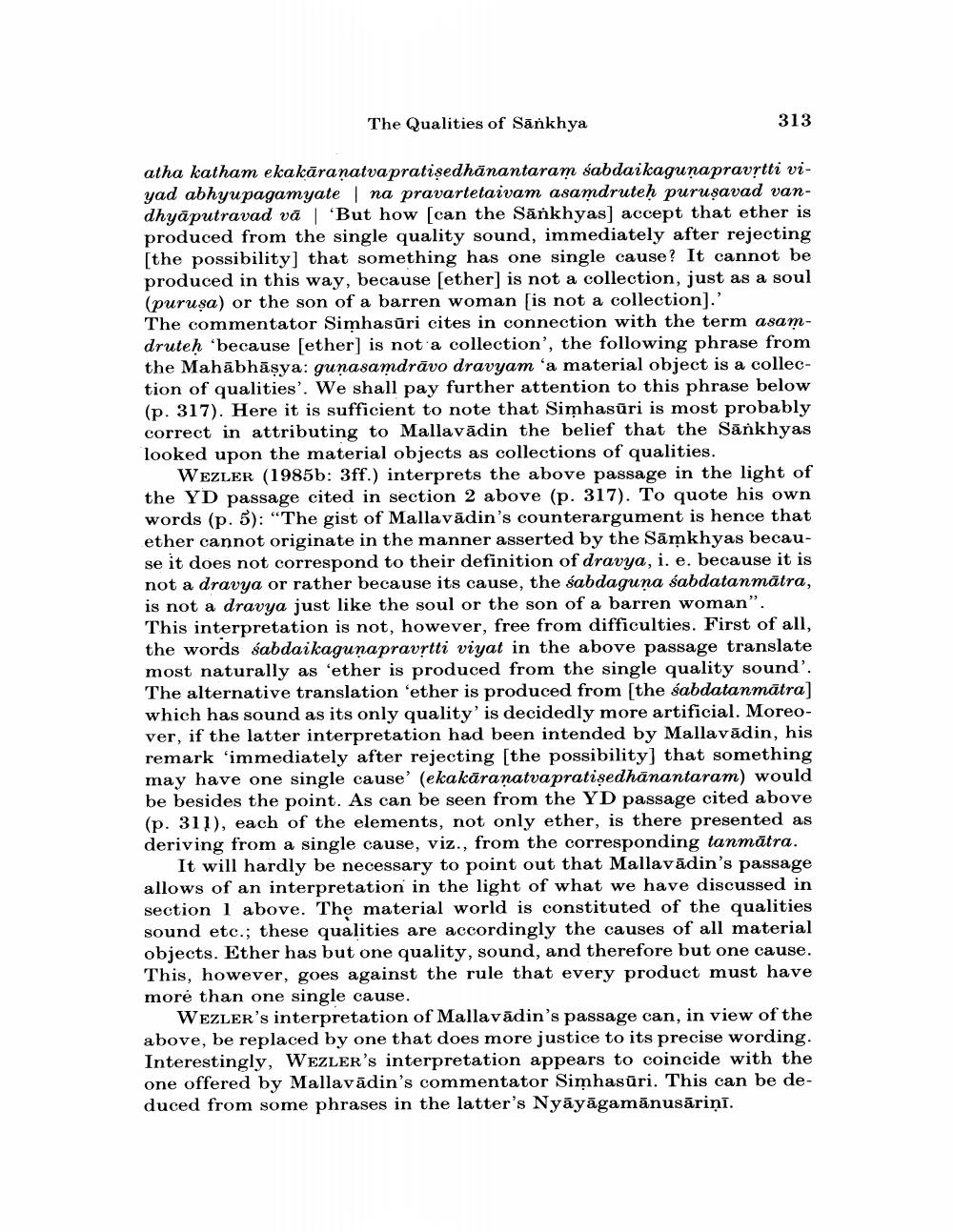________________
The Qualities of Sankhya
313
atha katham ekakāranatva pratişedhānantaram sabdai kagunapravrtti viyad abhyu pagamyate na pravartetaivam asamdruteḥ puruşavad vandhyāputravad vā | 'But how can the Sānkhyas) accept that ether is produced from the single quality sound, immediately after rejecting [the possibility] that something has one single cause? It cannot be produced in this way, because [ether] is not a collection, just as a soul (purusa) or the son of a barren woman is not a collection).' The commentator Simhasūri cites in connection with the term asamdruteh 'because ether is not a collection', the following phrase from the Mahābhāsya: gunasamdrāvo dravyam 'a material object is a collection of qualities'. We shall pay further attention to this phrase below (p. 317). Here it is sufficient to note that Simhasűri is most probably correct in attributing to Mallavādin the belief that the Sănkhyas looked upon the material objects as collections of qualities.
WEZLER (1985b: 3ff.) interprets the above passage in the light of the YD passage cited in section 2 above (p. 317). To quote his own words (p. 5): "The gist of Mallavādin's counterargument is hence that ether cannot originate in the manner asserted by the Sāmkhyas because it does not correspond to their definition of dravya, i. e. because it is not a dravya or rather because its cause, the sabdaguna sabdatanmatra, is not a dravya just like the soul or the son of a barren woman". This interpretation is not, however, free from difficulties. First of all, the words sabdai kagunapravrtti viyat in the above passage translate most naturally as 'ether is produced from the single quality sound'. The alternative translation 'ether is produced from the sabdatanmātra] which has sound as its only quality is decidedly more artificial. Moreover, if the latter interpretation had been intended by Mallavādin, his remark 'immediately after rejecting [the possibility) that something may have one single cause' (ekakāraṇatva pratişedhānantaram) would be besides the point. As can be seen from the YD passage cited above (p. 31!), each of the elements, not only ether, is there presented as deriving from a single cause, viz., from the corresponding tanmātra.
It will hardly be necessary to point out that Mallavādin's passage allows of an interpretation in the light of what we have discussed in section 1 above. The material world is constituted of the qualities sound etc.; these qualities are accordingly the causes of all material objects. Ether has but one quality, sound, and therefore but one cause. This, however, goes against the rule that every product must have more than one single cause.
WEZLER's interpretation of Mallavādin's passage can, in view of the above, be replaced by one that does more justice to its precise wording. Interestingly, WEZLER's interpretation appears to coincide with the one offered by Mallavādin's commentator Simhasūri. This can be deduced from some phrases in the latter's Nyāyāgamānusāriņī.




